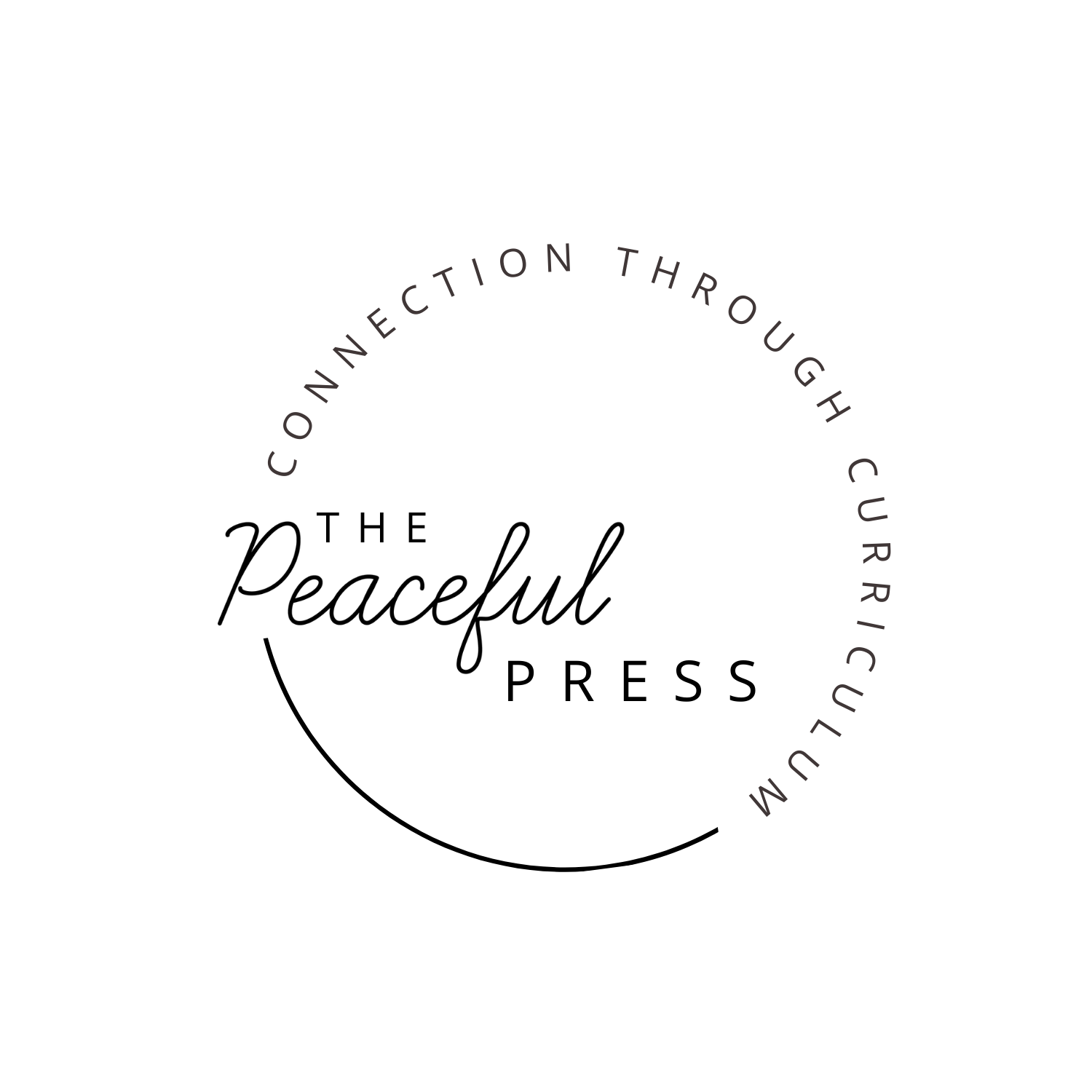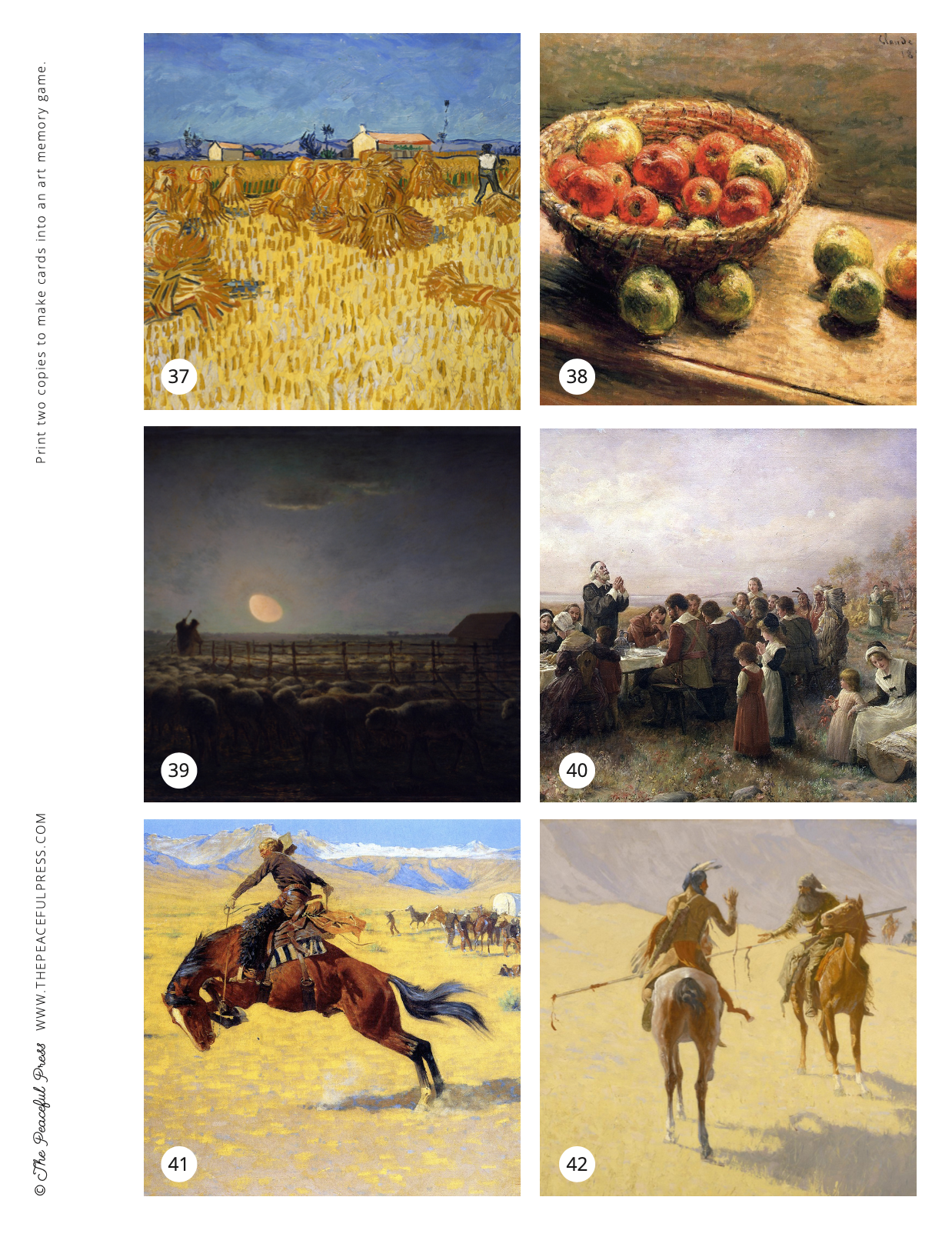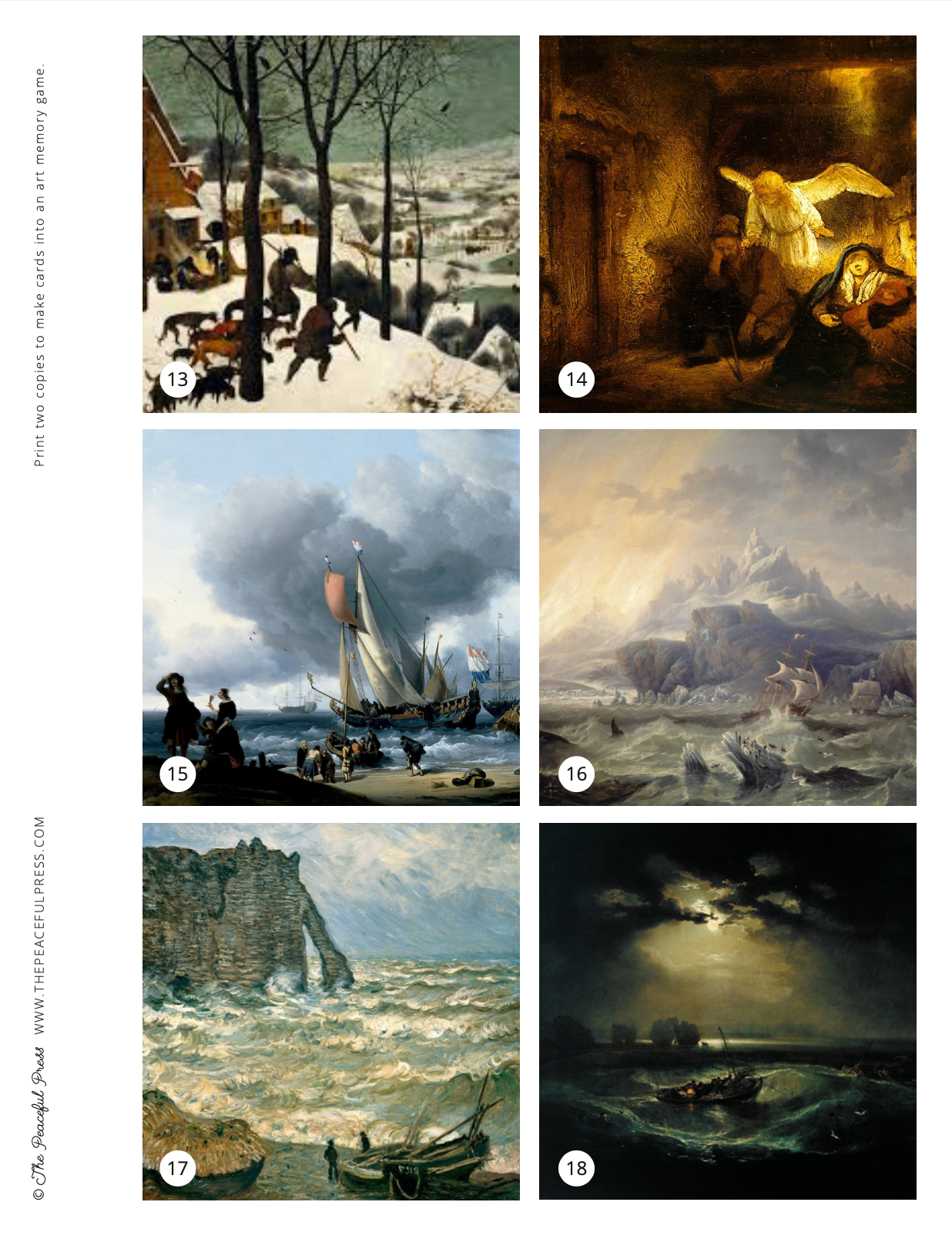Picture Study: Why & How
I remember the first time I was introduced to the term “Picture Study”. It was ten years ago when I had been contemplating the monumental question, “What is the best way to educate my kids?”.
I had come across two transformative books, For the Children’s Sake by Susan Schaeffer Macaulay, and The Charlotte Mason Companion by Karen Andreola. Including nature, poetry, art, and composer studies into my children’s education were first laid out before me, along with something altogether new called Picture Study.
“The children in Charlotte Mason’s schools had Picture Study every term from age six upwards. Between the ages of six and fifteen, a child had studied reproductions of pictures by some thirty of the world’s most famous artists.”
-The Charlotte Mason Companion, Karen Andreola, pg.190
“The child is given his first reproduction. He looks at it, and you let him talk about the picture. You don’t lecture about schools of painting or style. The child is allowed direct and fresh access to the picture itself”
-For the Children Sake, Susan Schaeffer Macaulay, pg.127
The design major in me was thrilled to hear that liberal art studies carried as much weight as the regular school subjects according to Ms. Charlotte Mason, who was an eighteenth-century British educator that seemed to be popping up everywhere I was reading. But why do a Picture Study or “Picture Talk”, as Charlotte Mason called it, and how is it done?
1. Picture Study cultivates a mental treasure house of beautiful images.
“Whatever is true, whatever is noble, whatever is right, whatever is pure, whatever is lovely, whatever is admirable—if anything is excellent or praiseworthy—think about such things.”
-Philippians 4:8 NIV
We first include Picture Study into the generous feast of our children’s curriculum to expose them to beauty in the form of great works of art. Images of mankind’s best, even inspired efforts to visually communicate creation, history, emotion, and everyday life are presented to them to consider and enjoy. Soaking in the details of these masterpieces trains young eyes to see what is admirable, excellent, and lovely. The pictures studied are then imprinted on their minds to be called upon whenever memories are recalled or connections are being made. As teachers, we decide what pictures are worthy enough to be presented to our children.
2. Picture Study develops the habits of patient attention and oral narration.
"...the highest intellectual gifts depend for their value upon the measure in which the owner has cultivated the habit of attention."
-Home Education, Charlotte Mason pg. 137
The second reason we do Picture Study is to develop what Charlotte Mason called “the power of seeing” or the patient habit of attention. I think we can all recall walking through a museum exhibit wondering:
“What am I looking at?”
“How am I supposed to really enjoy this?”
“Could I describe what I’m actually seeing?”
By consistently engaging in Picture Study, we learn how to really see something, to know what to look for, and to hold on to the impression it has made. Mental muscle is being built by giving full attention to observing a picture, empowering the habit of attention. Memory is reinforced by telling back aloud, also called ‘narration’.
Naturalist and scientist John Muir Laws supports Ms. Mason’s claim that we can increase our capacity to remember what is observed through narration. In his Nature Journaling workshops, John teaches an exercise in which he says to “say what you see out loud” as you give full attention to a particular subject. Doing this engages more senses, reinforcing the image in your brain.
My son, once not being able to find his sweater hanging amongst the coats by the front door, came to me for help. I knew it was hanging there because I could see it as I glanced over, so I instructed him to “do a Picture Study of the wall”. It seemed to register for him to look more carefully and work out what you are really seeing. Within seconds he located his sweater with a quiet smile. The power of full attention was in effect.
3. Picture Study creates connections with history and literature.
I vividly remember an art history class I took at design school where we were shown projector images of some of the greatest masterpieces in history.
Images flashed quickly across the wall as my instructor droned facts of the history and style of each painting. Most of my classmates slept on their desks in the darkened room. I can only recall one painting from that class, it was by Kandinsky, and I can’t even remember why.
I love art and was in a room full of fellow art students that should have been interested in what we were learning, but we couldn't appreciate the works of art introduced to us because of the coarse presentation.
“Once a child is fourteen years old, Charlotte Mason’s approach to Picture Study moves from simply “soaking in” everything about the picture to learning the history of different schools of Western European painting.”
-The Charlotte Mason Companion, Karen Andreola pg. 196
Picture Study, as we have implemented it over the years, has become a highlight of our day. There is no fear of facts to be memorized or long boring introductions to sit through, but rather the enjoyment of the art itself. A personal joy of mine has been visiting national and international galleries with my kids and seeing “old friends” in full scale and recalling the enjoyment of our times doing Picture Study on those particular paintings.
Picture Study lays the foundation for high school and college courses in Art History and Art Appreciation. Having had their introduction to the world of art positively established, older students are inclined to pursue art studies with greater appreciation, seeing works of art less as subjects and more familiar companions. So how does one do a Picture Study?
There are different ways to approach the “how” of Picture Study, but more essential is knowing the “why”.
Picture Study is time set aside to enjoy a picture of a great painting, illustration, or other work of art.
Doing a Picture Study does not necessarily need to be in the context of studying one particular style of art or artist, though you may definitely do picture studies that way. Picture Study or “Picture-Talk” as a subject can stand alone not needing to be connected to any other study.
The process takes only minutes of the day but reaps surprising rewards. You will find that the more you are consistent about doing Picture Study the better children get at remembering and reiterating what they have seen. These minutes of enrichment will naturally lend themselves to connections in literature, poetry, history, and geography. You may even see the connection played out in a game imagination.
“We cannot measure the influence that one or another artist has upon the child’s sense of beauty, upon the power of seeing, as in a picture, the common sights of life; he is enriched more than we know in having really looked at even a single picture”
-Home Education, Charlotte Mason pg. 309
Picture Study: Reveal, Consider, Narrate, Engage
In preparation for including Picture Study into your educational rhythms, first, decide what pictures you will use over the course of the year and how often you want to view a new image. The Peaceful Press provides a beautiful selection of pre-selected pictures to be enjoyed together once a week in The Playful Pioneers, The Precious People, and The Kind Kingdom curriculum.
Reveal.
We start a Picture Study by first handing the children the selected piece turned face-down, creating anticipation for the new image. Printing a picture for each child helps, but is not necessary. While they await the great reveal, I give familiar instructions that when the picture is turned face-up they will observe the image, gathering as many details as possible.
When the picture is flipped face-up and the children look at the picture with as much time as they need to fully see every detail, approximately 3-4 minutes. They observe quietly though they may be saying to themselves what they are seeing as their eyes move from corner to corner of the picture.
Narrate.
The picture is then turned face-down again. Starting with the youngest in the room, the children are asked to narrate everything they remember seeing in the picture. The next child then adds to the description after the youngest, including as many details as they can recall, then the next child and so forth. Once it feels that all that has been remembered has been said, you may need to ask leading questions directing them to an area of the picture that may have been overlooked:
Can you recall what color the sky was?
Was there anything in the grass?
Can you remember what was in the top left corner?
The purpose of this exercise is not to quiz them, but rather to draw out things they likely saw but forgot to mention. When all are satisfied that the picture has been thoroughly described to the best of their ability, we turn the image face up again and enjoy seeing what we missed or how well we recalled.
“Give them the picture - to look at, and ask them to find out all they can about it themselves … after three or four minutes, take the picture away and see what the children have noticed”
-Home Education, Charlotte Mason pg. 310
Engage.
At this point, the kids have fun trying to guess the title of the picture or even making up their own. We might also talk about anything historical about the image or specific location details (i.e. french countryside, specific wars, or costumed time periods).
Last of all, I briefly share the name of the artist and where he is from. That’s it! Picture Study is complete. The image can be put up to be enjoyed by all throughout the week or an art portfolio can be compiled of each child’s picture copies. Just for fun, we will frequently reference a world map to find the country the artist lived in or even watch a quick YouTube on “that specific flower” (and how lovely it is when it happens to tie in nicely with other conversations we had just had on the subject in other studies).
Getting Started.
An idea for younger students or those just getting started at Picture Study which helped my kids become accustomed to “what to look for” is instead of starting with the picture face-down, we would start by looking at the picture together face up.
After we’ve observed it silently, I ask a few generic questions: How many living things do you see? What colors do you see? What season do you think it is? Once they have become accustomed to hearing questions that help them to gather details from the picture, they can then ask themselves the questions in future Picture Studies.
Picture Study will begin to take shape according to your own family dynamic. As a subject, Picture Study is simply training in what is beautiful, in the power of attention, and in the enjoyment of future art studies. Most importantly, Picture Study is a time set aside to enjoy learning together. Those memories in themselves are the greatest gift that Picture Study can give.
Picture Study - Why?
Picture Study cultivates a mental treasure house of beautiful images.
Picture Study develops the habits of patient attention and oral narration.
Picture Study lays the foundation for future art studies and connections in history and literature.
Picture Study - How?
Reveal- Create anticipation around the new picture to be enjoyed.
Consider- Allow the children time to notice as many details as they can in the picture.
Narrate- Let the children tell back in their own words all that was seen in the picture, starting from the youngest to the oldest.
Engage- Give brief information about the artist and painting. Enjoy the picture on display.
Guest post by Cristina Eklund. You can learn more about Cristina at her Instagram @cottage_bookshelves
Are you ready to create a living education for your family?
One that allows time for reading aloud, creating, spending time in nature, and experiencing the world? Get started today and create a hands on education that actually works for your child! Download the printable 26 weeks of curriculum teaching reading, phonics, math and develops fine & gross motor skills.
Join the thousands of families who discovered a new way to educate their children! Access the full year of curriculum for JUST $39
This post has affiliate links. Thanks for clicking through and supporting our work.







